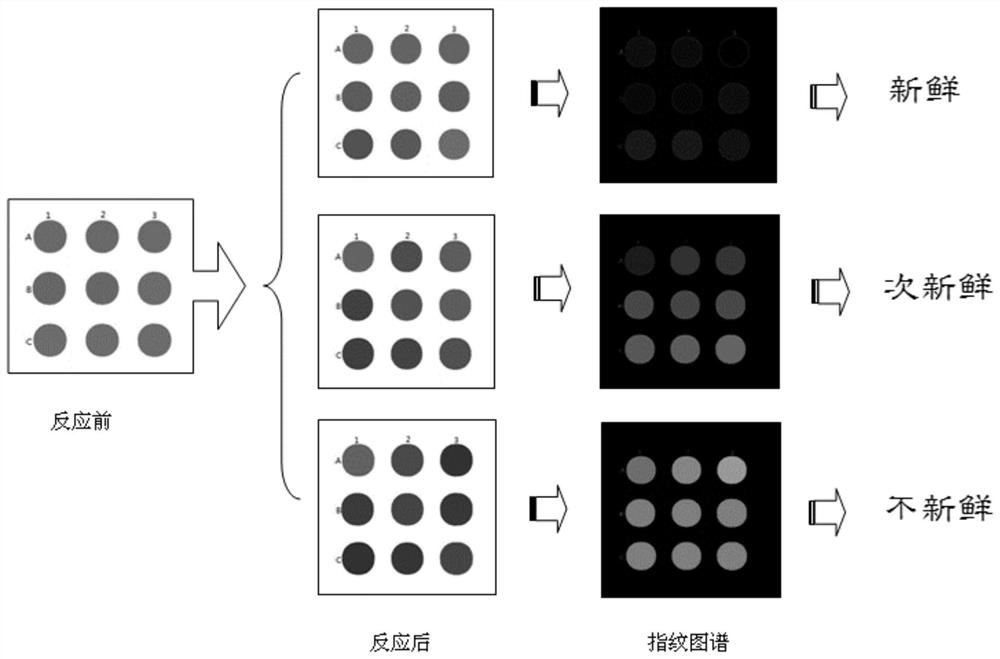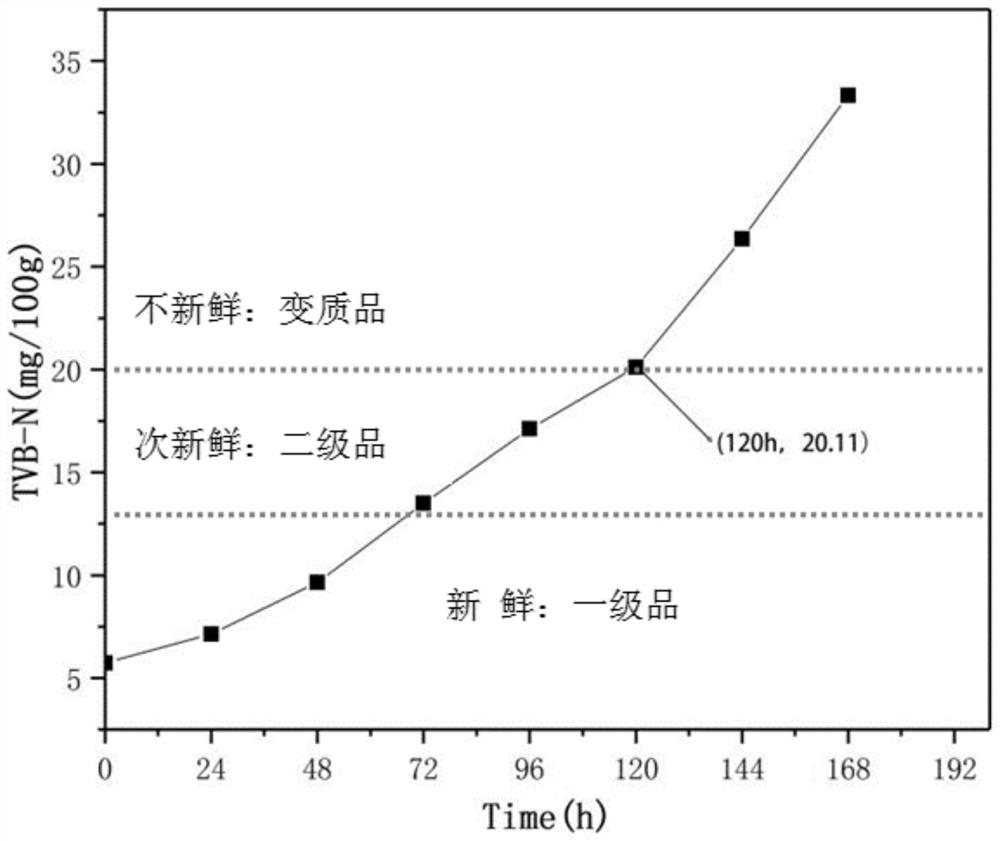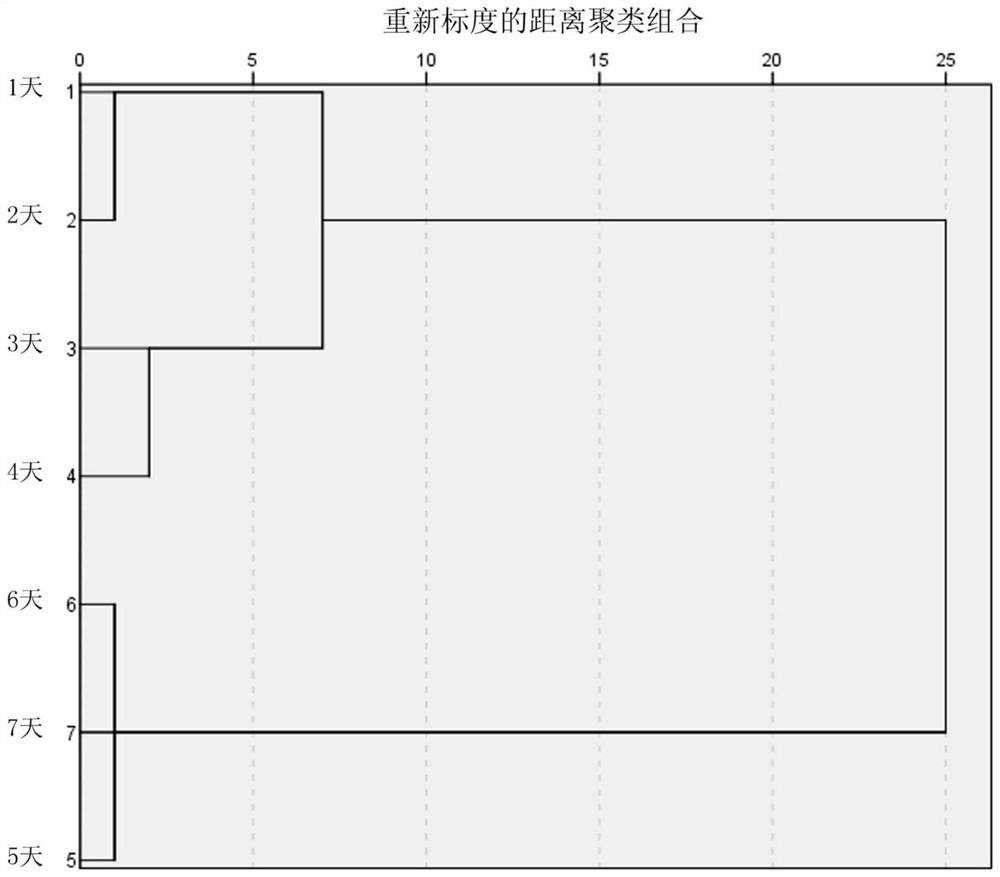Paper-based colorimetric sensor array label and its preparation method and application
A sensor array and label technology, which is applied in the direction of analyzing materials through chemical reactions and analyzing materials through observing the impact on chemical indicators, can solve the problems of high production costs, environmental pollution, and low comprehensive effects. Achieve good consistency, avoid free diffusion, and good environmental effects
- Summary
- Abstract
- Description
- Claims
- Application Information
AI Technical Summary
Problems solved by technology
Method used
Image
Examples
Embodiment 1
[0030] The preparation method of the paper-based colorimetric sensor array label provided in the first embodiment includes the following steps:
[0031] Step 1: Soak the filter paper in 0.1% (v / v) n-hexane solution of octadecyltrichlorosilane (OTS) for 30 minutes, take it out and rinse it once with n-hexane and absolute ethanol respectively, through the coupling effect of organosilane A hydrophobic monomolecular layer is formed by self-assembly on the surface of paper fibers, and dried at 40°C to obtain an overall hydrophobized modified filter paper.
[0032] Step 2: On the filter paper obtained in step 1, cover a mask with a 3×3 array hole (round hole, the diameter of the array hole is 6mm), and place the side covering the mask upwards, and place it in a 185 / 254nm dual Wash for 20 hours under a wavelength ultraviolet lamp (power 8W), because the oxygen in the air will produce ozone under the action of 185nm ultraviolet light, so under the dual action of ultraviolet light and ...
Embodiment 2
[0045] The preparation method of the paper-based colorimetric sensor array label provided in the second embodiment includes the following steps:
[0046] Step 1: Soak the filter paper in n-hexane solution of octadecyltrichlorosilane (OTS) for 10 minutes, take it out and rinse it once with n-hexane and absolute ethanol respectively, and self-assemble on the surface of paper fibers through organosilane coupling to form a Layer hydrophobic monolayer, drying to obtain overall hydrophobic modified filter paper;
[0047] Step 2: Cover a mask with a 3×3 array of holes on the filter paper obtained in step 1, and place the side covering the mask upwards, and wash it under a 185 / 254nm dual-wavelength ultraviolet lamp for 10 hours, because Oxygen in the air will generate ozone under the action of 185nm ultraviolet light, so under the dual action of ultraviolet light and ozone, the alkyl chain will be broken to form hydrophilic aldehyde or carboxyl groups, thus obtaining the hydrophilic, ...
Embodiment 3
[0052] The preparation method of the paper-based colorimetric sensor array label provided in Example 3 includes the following steps:
[0053] Step 1: Soak the filter paper in n-hexane solution of octadecyltrichlorosilane (OTS) for 20 minutes, take it out and rinse it with n-hexane and absolute ethanol respectively, and self-assemble on the surface of paper fibers through organosilane coupling to form a Layer hydrophobic monolayer, drying to obtain overall hydrophobic modified filter paper;
[0054] Step 2: On the filter paper obtained in step 1), cover a mask with a 3×3 array of holes, place the side of the mask facing up, and wash it under a 185 / 254nm dual-wavelength ultraviolet light for 20 hours. Because the oxygen in the air will produce ozone under the action of 185nm ultraviolet light, under the dual action of ultraviolet light and ozone, the alkyl chain will be broken to form a hydrophilic aldehyde group or carboxyl group, so that the array hole area is hydrophilic , M...
PUM
 Login to View More
Login to View More Abstract
Description
Claims
Application Information
 Login to View More
Login to View More - R&D
- Intellectual Property
- Life Sciences
- Materials
- Tech Scout
- Unparalleled Data Quality
- Higher Quality Content
- 60% Fewer Hallucinations
Browse by: Latest US Patents, China's latest patents, Technical Efficacy Thesaurus, Application Domain, Technology Topic, Popular Technical Reports.
© 2025 PatSnap. All rights reserved.Legal|Privacy policy|Modern Slavery Act Transparency Statement|Sitemap|About US| Contact US: help@patsnap.com



